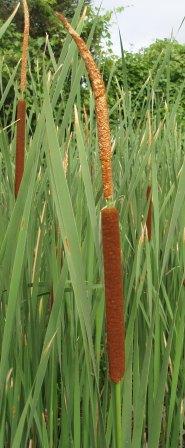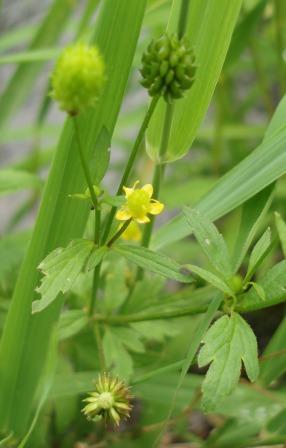by Carl Strang
American elder, or elderberry, is a shrub with a fairly broad ecological range, though it usually wants its feet somewhat wet.
In winter it often takes the form of a cluster of stems.
April 2, 2014 at 1:29 pm (botany)
Tags: elderberry, Sambucus canadensis, winter botany
by Carl Strang
American elder, or elderberry, is a shrub with a fairly broad ecological range, though it usually wants its feet somewhat wet.
In winter it often takes the form of a cluster of stems.
September 4, 2009 at 6:30 am (birds, botany)
Tags: bittersweet nightshade, black raspberry, elderberry, Mayslake, Phytolacca americana, pokeweed, Polygonatum canaliculatum, Rhus typhina, Rubus occidentalis, Sambucus canadensis, smooth Solomon's seal, Solanum dulcamara, staghorn sumac
by Carl Strang
A few berries and other fruits attracted the attention of birds and mammals earlier in the season, for instance those of the black raspberry.

But autumn is the time when the greatest diversity of fruits can be found. Many plants ripen their fruits to coincide with the fall migration season, when traveling birds are happy to fuel themselves on fruits and, subsequently, spread the seeds around. I have been recording ripening dates of fruits at Mayslake Forest Preserve. Some, like the bittersweet nightshade, are not native to the area.

Others, like elderberry, long have been part of the local scene.

Additional fruits to this point in the season have been those of pokeweed,

smooth Solomon’s seal,

and staghorn sumac.

There will be more to report as autumn proceeds. I should note as a reminder that though these fruits attract birds, some are poisonous to us.
August 20, 2009 at 6:34 am (botany)
Tags: Asclepias incarnata, Bidens polylepis, bristly buttercup, bur marigold, cardinal flower, common cattail, common water horehound, elderberry, Eupatorium maculatum, lady's thumb, Lobelia cardinalis, Lycopus americanus, Mayslake, Polygonum persicaria, Polygonum punctatum, Ranunculus pensylvanicus, Sambucus canadensis, smartweed, spotted Joe Pye weed, swamp milkweed, Typha latifolia
by Carl Strang
To this point in the season I have included wetland plants with prairie plants in my accounts of species flowering at Mayslake Forest Preserve. This time I’ll feature them separately. It has been a while since the common cattails flowered.

Their seeds are ripening now. Though elderberry can occur in woodlands, at Mayslake this shrub grows mainly in wetlands.

The pink and white flowers of swamp milkweed are my favorites in genus Asclepias.

Spotted Joe Pye weed is a wetland plant that superficially resembles its woodland relative, purple Joe Pye weed.

A less conspicuous wetland species is the common water horehound.

Most buttercups bloom early in the season. An exception is the bristly buttercup.

Two of the knotweeds recently began to bloom along the stream: Lady’s thumb

and smartweed.

Late summer brings hummingbirds, gradually making their way south. Among the flowers that especially appeal to them, being red and tubular in shape, is the cardinal flower.

Finally, here is the first of the late season beggar’s ticks group, the bur marigold.

And that brings us up to date.